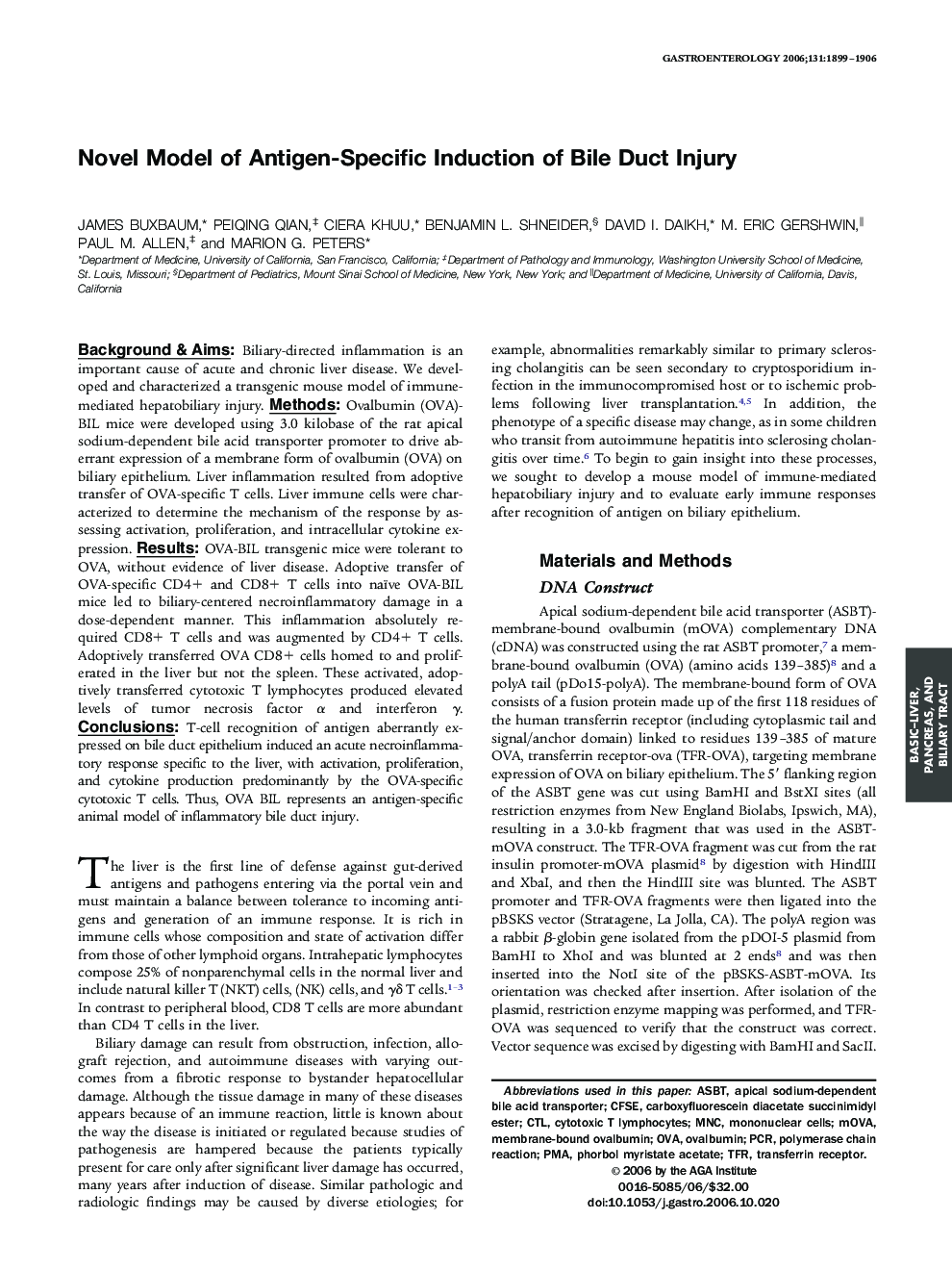| Article ID | Journal | Published Year | Pages | File Type |
|---|---|---|---|---|
| 3299627 | Gastroenterology | 2006 | 8 Pages |
Abstract
Background & Aims: Biliary-directed inflammation is an important cause of acute and chronic liver disease. We developed and characterized a transgenic mouse model of immune-mediated hepatobiliary injury. Methods: Ovalbumin (OVA)-BIL mice were developed using 3.0 kilobase of the rat apical sodium-dependent bile acid transporter promoter to drive aberrant expression of a membrane form of ovalbumin (OVA) on biliary epithelium. Liver inflammation resulted from adoptive transfer of OVA-specific T cells. Liver immune cells were characterized to determine the mechanism of the response by assessing activation, proliferation, and intracellular cytokine expression. Results: OVA-BIL transgenic mice were tolerant to OVA, without evidence of liver disease. Adoptive transfer of OVA-specific CD4+ and CD8+ T cells into naïve OVA-BIL mice led to biliary-centered necroinflammatory damage in a dose-dependent manner. This inflammation absolutely required CD8+ T cells and was augmented by CD4+ T cells. Adoptively transferred OVA CD8+ cells homed to and proliferated in the liver but not the spleen. These activated, adoptively transferred cytotoxic T lymphocytes produced elevated levels of tumor necrosis factor α and interferon γ. Conclusions: T-cell recognition of antigen aberrantly expressed on bile duct epithelium induced an acute necroinflammatory response specific to the liver, with activation, proliferation, and cytokine production predominantly by the OVA-specific cytotoxic T cells. Thus, OVA BIL represents an antigen-specific animal model of inflammatory bile duct injury.
Keywords
Related Topics
Health Sciences
Medicine and Dentistry
Gastroenterology
Authors
James Buxbaum, Peiqing Qian, Ciera Khuu, Benjamin L. Shneider, David I. Daikh, M. Eric Gershwin, Paul M. Allen, Marion G. Peters,
